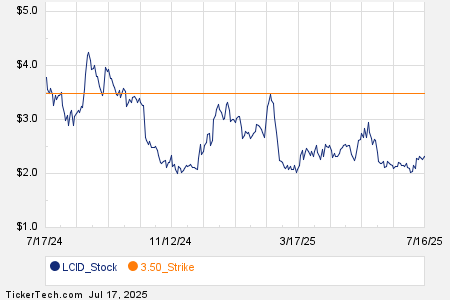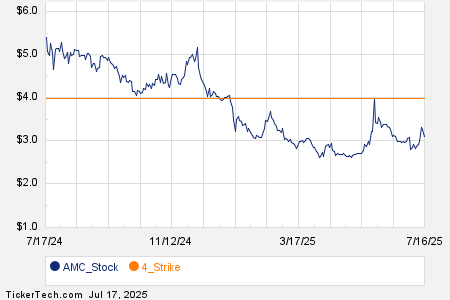“`html
Navigating Foreign Exchange Rate Risk: What Investors Need to Know
Foreign exchange rate risk, also known as currency risk, arises when currency values fluctuate. For investors and companies involved in international markets, this unpredictability can significantly affect profits and investment returns. Thankfully, various strategies and tools exist to mitigate foreign exchange rate risk. Collaborating with a financial advisor can help manage it effectively. Here’s what you should understand.
What Is Foreign Exchange Risk?
Foreign exchange risk occurs when the value of a currency changes between the start and finish of a transaction. This change can influence expenses for goods, investment values, or the profitability of global business activities.
For instance, an American firm importing products from Europe might face increased costs if the euro appreciates against the dollar, requiring more dollars to purchase the same quantity of goods.
Mechanics of Foreign Exchange Risk
Many factors affect foreign exchange risk, including interest rates, geopolitical developments, trade policies, and market sentiment.
Currency markets operate continuously, with rates changing swiftly due to economic reports or unexpected global events. These rapid fluctuations can create uncertainty for investors and businesses involved in cross-border transactions.
Illustrating Foreign Exchange Risk
Let’s say you’re an investor based in the U.S. with shares in a European company valued in euros. If the euro’s value drops relative to the dollar, your investment’s dollar value will decrease, even if the share price remains stable in euros. This currency risk could dampen profits or enhance losses. Conversely, a stronger euro would amplify returns when converted back to dollars.
Types of Foreign Exchange Risk
Foreign exchange risk can present itself in various forms. Here are four important types:
- Transaction Risk: This arises when a company or investor faces currency fluctuations during a transaction. For example, if a payment is due in a foreign currency, the exchange rate at settlement may differ from when the contract was signed.
- Translation Risk: This impacts companies with financial statements reported in foreign currencies. Changes in exchange rates can influence reported revenue, expenses, and profits when consolidating financial reports.
- Economic Risk: This pertains to the long-term implications of currency fluctuations on a company’s market value. This risk can influence competitiveness, market share, and profitability, especially for firms operating internationally.
- Speculative Risk: Investors or companies engaging in currency trading to gain from exchange rate shifts expose themselves to speculative risk. This can carry significant risk and lead to considerable losses if market movements are unfavorable.
Strategies to Hedge Against Foreign Exchange Rate Risk

Hedging involves using financial tools or strategies to reduce potential losses resulting from currency fluctuations. Below are five common methods to hedge against foreign exchange rate risk.
Forward Contracts
A forward contract enables you to secure an exchange rate for a designated future date. These personalized agreements are negotiated directly with financial institutions. A forward contract ensures you know exactly what you will pay or receive in your base currency.
For example, if an American company needs to pay a European supplier €100,000 in three months and the current rate is 1 EUR = 1.10 USD, the company can enter a forward contract to set this rate. Regardless of whether the euro appreciates to 1 EUR = 1.15 USD or depreciates to 1 EUR = 1.05 USD, the company will still exchange at the agreed rate of 1.10 USD, protecting itself from adverse currency fluctuations.
Forward contracts are particularly advantageous for businesses and investors with consistent foreign currency needs, like regular international payments.
Currency Futures
Currency futures are standardized contracts traded on exchanges, allowing you to buy or sell a specific currency amount at a fixed exchange rate on a future date. Unlike forward contracts, futures are public agreements that offer greater liquidity and transparency.
For example, if you hold foreign assets and plan to convert them back to your home currency in six months, you can use a currency futures contract to secure the exchange rate, thus minimizing the risk of loss. Any market exchange rate shifts against your position will be offset by gains or losses on the futures contract.
Currency futures work well for those who prefer flexibility and transparency, as you can readily buy or sell these contracts on exchanges.
Options Contracts
Options contracts provide the right, but not the obligation, to exchange currency at a specified rate before or by a particular expiration date. This flexibility allows you to benefit from favorable exchange rate movements while limiting potential losses. However, options do require an upfront premium, balancing the protection they offer.
For example, consider a Canadian importer needing to pay in USD for goods in three months. If the Canadian dollar weakens against the U.S. dollar during this period, the total amount in CAD would rise.
By acquiring a currency option, the importer can secure the right to exchange CAD for USD at a favorable rate. Should the CAD strengthen, the importer has the option to not exercise the contract and benefit from the improved rate.
Options are beneficial for hedgers seeking flexibility since they allow investment in favorable currency shifts while safeguarding against losses.
Natural Hedging
Natural hedging is a strategy that involves aligning revenues and expenses in the same foreign currency. This approach eliminates the need for currency conversions, thus reducing exposure to exchange rate fluctuations. It stands out as a cost-effective strategy that doesn’t necessitate additional financial instruments.
For instance, a U.S. exporter earning revenues in euros may choose to pay its European suppliers in euros. This way, the company synchronizes its costs and revenues in the same currency.
“`
Mastering Foreign Exchange Risk: Essential Strategies for Businesses and Investors
Understanding how to manage currency inflows and outflows can eliminate the need to constantly exchange euros for dollars.
The Power of Natural Hedging
Natural hedging is most effective for businesses with a balance of cash flows in various foreign currencies. This method demands careful planning but can significantly reduce currency risk without incurring extra costs.
Advantages of Multi-Currency Accounts
Multi-currency accounts enable businesses and investors to hold funds in different currencies. By maintaining balances in foreign currencies, businesses can bypass the risks and costs that come with frequent currency exchanges. Additionally, these accounts offer great flexibility for managing payments and receiving funds in multiple currencies.
For instance, if you have investments in the U.K. and the Eurozone, a multi-currency account would allow you to hold both GBP and EUR. This setup means expenses or fund transfers can be made directly from the associated currency balance, without the need for conversion to your home currency.
These accounts are especially advantageous for global enterprises and investors who often engage with various currencies. Streamlining currency management helps to reduce the risks posed by fluctuating exchange rates.
FAQ: Understanding Currency Risk and Hedging
Who Should Hedge Against Foreign Exchange Rate Risk?
Individuals or businesses exposed to foreign currencies—including importers, exporters, and investors in foreign assets—should consider hedging to guard against potential losses.
Are Hedging Strategies Expensive?
While hedging strategies incur costs, such as option premiums or fees for forward contracts, these expenses can be justified when weighed against the possible losses from not hedging currency exposure.
Can Hedging Completely Eliminate Currency Risk?
Although hedging can greatly minimize currency risk, it doesn’t remove it entirely. Other financial factors, like interest rate changes or market volatility, can still affect hedged transactions.
Conclusion: Navigating Currency Challenges

Managing foreign exchange rate risk poses a challenge for both investors and businesses but can be addressed with the right strategies. Options like forward contracts and futures allow you to fix exchange rates for upcoming transactions, while choices such as options provide the freedom to benefit from upward rate movements. Natural hedging aligns revenues and costs in the same currency to minimize conversions, and multi-currency accounts give you the ability to control funds in various currencies, potentially lessening exposure to exchange rate fluctuations.
Investment Planning Recommendations
- A financial advisor can assist you in analyzing investments and managing risk within your portfolio. Finding a qualified advisor is straightforward with SmartAsset’s free tool that connects you with up to three vetted financial advisors in your area. After a complimentary introductory call, you can choose the advisor best suited to your financial goals.
- To estimate how much your investments might grow over time, consider using SmartAsset’s investment calculator for projections.
Photo credit: ©iStock.com/bojanstory, ©iStock.com/Jelena Danilovic, ©iStock.com/mith_67
The post How to Hedge Against Foreign Exchange Rate Risk appeared first on SmartReads by SmartAsset.
The views and opinions expressed herein are solely those of the author and do not necessarily reflect the views and opinions of Nasdaq, Inc.






